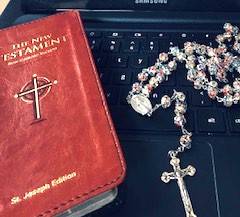 What is Pace?
What is Pace?
Wikipedia defines pace or pacing as the speed at which a story is told — not necessarily the speed at which the story takes place. How does your story unfold? What is it’s rhythm and flow? Shouldn’t there be a rise and fall of plot points and events? Pace refers to the story, but also to the chapters, paragraphs, and single sentences. They all have to unfurl with rhythm and flow.
I find it enormously valuable to be sure that that the pacing is what I think it is and that the scenes have the shape I think they have musically and dramatically. (Carlisle Floyd)
That is why I spend much of my spare time as a prose writer reading poetry. I want my sentences to have a beat, like music, to capture my reader and hold them in rap attention. I want my work to ripple and so spellbind my readers that they reach the end of the story in comfort and with a sense that the story was well-told and completely sensible.
Most writers, as editors will tell you, are rejected because the pace of their story is too slow. Too slow a pace loses and bores the reader. That doesn’t mean that your story has to have all the action scenes of an Indiana Jones movie. It means that your story has to keep moving. The reader is waiting for the story to unfold. So what are the questions that writers should ask themselves?
Is my story balanced?
In fiction, there is dialogue, action, and narrative. They have to be woven together like a tapestry. I like to hook both an editor and my readers by starting a novel with action. Someone is actually doing something and the reader longs to know why. Create enough tension with the action to make your reader interested. It can be just a few sentences or paragraphs. That is what I mean by balance. Segue into dialogue or narrative before your reader gets bored with nothing but action.
One of the qualities of writing that is not much stressed is its problem-solving aspect, having to do with the presentation of material: how to structure it, what sort of sentences (direct, elliptical, simple or compound, syntactically elaborate), what tone (in art, “tone” is everything), pacing. Paragraphing is a way of dramatization, as the look of a poem on a page is dramatic; where to break lines, where to end sentences. (Joyce Carol Oates)
And yes, readers do get bored with constant action. Even your most action-packed writers will blend all three elements together. After an exciting action scene, give the reader a short rest with descriptive narrative or reasoned dialogue that explains or explores the background that led to the action. In like manner, your work should continue to be a blend of action, dialogue, and narration. Too much of any of these three is distracting and slows the story.
How do I structure my plot?
Some writer’s use outlines and planning cards to structure both their plots and stories. I use storyboards. I like a visual of each chapter laid out before me long before I write a single word. That makes my writing much easier. I already know what part of the story that particular chapter conveys.
I picture my books as movies when I get stuck, and when I’m working on a new idea, the first thing I do is hit theaters to work out pacing and mood. (Maggie Stiefvater)
I also know the characters involved. I already have a “hook” that will lead to the next chapter. What now? I can concentrate on the dialogue and the personality of the character and how they would logically respond to the action. I can lay out a plausible setting with descriptive narration. I can drop hints of what is to come.
Some writers use Scrivener’s scene and chapter cards to outline their work with great success. You have to find what works for you. No two writers are alike. Whatever method you use will help you see where you need to increase the pace or the tension. You can discover balance and where to slow things down with narration or dialogue. Where is your story uneven? Are you being inconsistent?
What about my characters?
Character development needs to be paced as much as the plot. Your character may have a “lightbulb” moment, but most characters reach a developmental arc slowly and learn to use the new characteristic with tentative action. For example, your character may start the story as a coward and slowly develop the courage they need to move the plot in the right direction.
Remember, the essence of storytelling demands that we place our main characters on a path. A quest with something at stake, with something to do, to achieve, to learn, and to change. (Larry Brooks)
Your reader has to care about your character. What are the character’s motivations? The reader needs to have some empathy with your protagonist. Your characters need to have strengths and weaknesses that move the plot. The pace of your story is dictated by the dialogue, needs, and growth of your main character. Never forget to develop your characters as completely as your plot.
How do I use pace in nonfiction?
Look at what I have done here. In nonfiction you use quotes to both break up and pace your narrative. Quotes by experts are your dialogue. Too many and you slow your pace. Too few and you bore your reader. Nonfiction needs to be broken into logical bites of information, peppered with memorable quotes by experts.
Copyright 2021 Karen Kelly Boyce